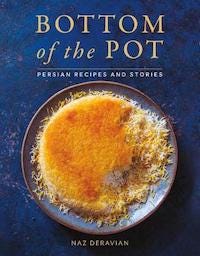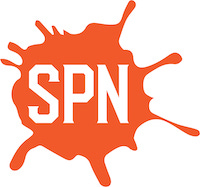The Stained Page News Guide to Canadian Cookbooks
Beyond Nanaimo bars.
Howdy cookbook fans!
And welcome to a very special issue of Stained Page News. A good number of you out there are not US-based, and for a long time, I’ve wanted to do a series of guides to the cookbooks of other countries: what volume is dog-eared and stained on your grandmothers’ counters? Who are the new authors making names for themselves? That kind of thing. And today I am thrilled to announce the first guide in this series: author, Nova Scotian, and certified cookbook nerd Simon Thibault is here to tell us all about Canadian cookbooks, from 1854 to today. (This is a long one, so you might want to click through to the website by clicking on the title at the top.)
Canadians, tell us all about your faves in the comments! And Simon, take it away.
The Stained Page News Guide to Canadian Cookbooks
A couple years ago, a friend of mine asked me to recommend a “quintessential Canadian cookbook,” as a gift for a Spaniard living in Canada. In the words of famous Canuck Ryan Reynolds, “Aw fuck, buddy.” That’s like asking for the quintessential jazz record: there is no singular answer. Nor should there be. As a cookbook writer myself (2017’s Pantry and Palate: Remembering and Rediscovering Acadian Food), and cookbook collector (I’ve been known to travel with empty suitcases to cookbook stores), I felt like I could and should be able to tell him something.
But we are more than one title, one definition. We are more than a nation of butter tarts. We are more than poutine (which is Québécois and has been appropriated as Canadian, but that’s a whole other post). We are more than all dressed potato chips and bagged milk. Canadian food is not a monolith, nor are our recipes (or receipts, as some of us still call them).
So when Paula asked if anyone wanted to contribute a guide to Canadian cookbooks to Stained Page News, I felt compelled to answer. And so here is a list (not the list, and whoever says they have written the list is obviously not Canadian) of Canadian cookbooks and cookbook authors you should know, with a touch of cultural context to boot.
The Beginnings: the 19th Century
Canada was founded in 1867, and currently comprises 10 provinces and three territories which span from sea to sea to sea. Before Canada was Canada, it was a land populated by various indigenous peoples who cultivated the lands, including the First Nations across most of what we now call the provinces, and the Inuit in the northern territories. The first major waves of colonists and settlers to arrive on the eastern shore of the region were the French and the English, both of whom would fight for the rights to this “new world.”
The act of colonizing and westernizing this part of the world changed the face of food traditions—agricultural and culinary—of the indigenous populations, much like it did in the United States. Those traditions were, however, partially recorded by those colonists, filtered through western eyes. One of the most interesting books in this category was The Female Emigrant’s Guide, by Catharine Parr Traill, published in 1854. In a recent edition of the book, editors Fiona Lucas and Nathalie Cooke write that, although Parr Traill was a woman biased by her time, the Guide is “a treasure trove of information about how to survive the embarking on a journey into the backwoods[…] full of fundamental knowledge about seasonal eating, local sourcing, foraging, small-scale farming, kitchen gardening, and how to preserve the bounty for future seasons and generations.”
See also: Elizabeth Driver’s Culinary Landmarks: A Bibliography of Canadian Cookbooks, 1825-1949. A work of academic and culinary research worth seeking out.
Product Placement, Smart Selling: the Early 20th Century
By the early 20th century, the concept of home economics became de rigueur in Canadian homes, with a strong link to the purchasing power of consumers. Product placement as cookbooks (small pamphlets, booklets, full-fledged books) was the easiest way to not only sell your product, but to ensure your product became part of housewives’ daily cooking. These books were affordable and dependable (“Kitchen tested!”), with economical recipes, which became incredibly important during the depression of the 1930’s.
The Blue Ribbon Cook Book, produced in 1905 by a Winnipeg manufacturer and packer of tea, coffee, extracts, spices, became well known and well worn by prairie housewives. Much of the country was (and still is) very familiar with the Five Roses cookbook, published by a Montreal flour mill. In Atlantic Canada, The Purity Cookbook was a stalwart example of dependable recipes. Purity Factories still exists, and these foods are intrinsic to pantries of Newfoundlanders. The Purity Cookbook is evergreen not because of the simple recipes, but also because it has been updated for modern readers by Elizabeth Driver.
See also: Kate Aitken, Marie Nightingale’s Out Of Old Nova Scotia Kitchens.
Canadian Cooking Is Home Cooking: From Midcentury On
Canada for a long time was (and arguably still is, depending on who you ask) a country made of up two solitudes: French and English Canada. Languages were intellectual borders that left many Canadians unaware of each solitude’s kitchen habits and histories. Jehane Benoît, also known as Madame Benoît, spoke to both, writing books in both official languages, each tailored to its linguistic and culinary audience. She knew how to sell not just the idea of cooking as a form of pleasure, but products as well. In the 1970’s, Benoît was one of the first big public food figures to extoll the beauty of microwaves to Canadians.
A caterer by trade, Jean Paré is known across the country for her Company’s Coming series of cookbooks. The spiral bindings of her books are at once homey and homely from a modern publishing perspective, but like the community and church books they harken to, Paré’s recipes were always nearly foolproof. Their legacy is still ongoing, as there are currently over 200 Company’s Coming titles out there.
Canadian Living magazine has published many titles throughout the years, keeping in mind easy, practical, time- and money-saving recipes. Many of these recipes and books (as well as the television series that would come from them) owe impact to Elizabeth Baird, who spent 20 years as food editor at Canadian Living.
In Toronto, Bonnie Stern operated a cooking school from 1973 to 2011, but her reach would soon move outside the confines of the city with multiple books and an IACP Award in 2004 for Essentials of Home Cooking. Stern’s rugelach recipe is particularly famous—Yotam Ottolenghi even included it in one of his books.
Another legacy of Canadian cookbook publishing focuses on the communities that make their lives here. In the 1960s, Edna Staebler wrote Food That Really Schmecks, a book on the culinary traditions of her Mennonite neighbours that would sell hundreds of thousands of copies, as well other titles, More Food That Really Schmecks, and Schmecks Appeal.
See also: Stephen Yan’s Wok With Yan books, television series, and aprons, Norene Giletz, a.k.a. Canada’s Jewish Julia Child, the self-published wonders of Greta Podleski along with her sister Janet (i.e Loonie Spoons), Micheal Smith cooking from his pantry. (Literally.) And Anita Stewart’s many works on Canadian culinaria, Anita Stewart’s Canada.
Breaking Borders, Changing Audiences: the 21st Century
As a new century dawned, Canadian writers started publishing books about food from around the world, as well as international cuisines as they are eaten in Canada. Naomi Duguid made a career out of this, first with her ex-husband Jeffrey Alford in their stunning books such as Flatbreads and Flavours and Hot, Sour, Salty, Sweet; and then on her own, including Burma: Rivers of Flavour and Taste of Persia. Naz Deravian’s Bottom of the Pot is a love letter to her Iranian heritage, while Ann Hui’s recent IACP award-winning Chop Suey Nation follows Hui as she travels coast to coast to coast to figure out what Chinese food means to those who make it and those who eat it, in all of its infinite variations.
The world soon began to take Canada seriously as a culinary destination, with much attention placed upon the city of Montreal. Martin Picard would serve gargantuan feasts at his restaurants Au Pied de Cochon and his satellite winter only, sugar shack-themed Cabane Au Pied de Cochon. The books for both of these restaurants were not only big hits in Canada, but in the rest of North America, especially amongst chefs.
Also in Montreal, David McMillan and Frederic Morin from Joe Beef, a restaurant also known for large quantities of over-the-top food. Meredith Erickson, one the restaurant’s first servers, helped rally the two of them into publishing The Art of Living According to Joe Beef: A Cookbook of Sorts as well as Joe Beef: Surviving The Apocalypse. Erickson has gone on to make a name for herself as a cookbook author, first as a contributor working with US chefs such as Kristen Kish and Gabriel Rucker. Most recently she has written her own book, Alpine Cooking: Recipes and Stories from Europe's Grand Mountaintops.
Not everything modern Canuck goes through the large publishing houses. There are many ways of gathering an audience to oneself: Julie van Rosendaal, for one, decided to go the solo route, pushing the boundaries of what a cookbook (and cookbook author) should look like with the self-published Dirty Food. Neither the book nor Julie take themselves too seriously, as the book was printed with an open spine and features Julie on the back cover mowing down jelly donuts that have exploded all over her and her David Bowie t-shirt.
Tara O’Brady’s cookbook Seven Spoons as well as her work over at Epicurious has garnered her a lot of attention not only for her recipes (I had at least three people send me her Stone Fruit Custard Tart, which I already had made at that point, and to which I deliciously pointed out that Tara is a fellow Canuck) but also for her clear and beautiful writing about topics that matter in food, especially her piece The Color of My Skin Is Sometimes Confused With the Scope of My Talent.
To conclude, several of the present day gems of Canadian cookbook publishing tell Canada’s indigenous culinary stories, written by First Nations chefs and food writers. Titles that feature the foodways of First Nations chefs like David Wolfman’s Cooking With The Wolfman: Indigenous Fusion and Shane M. Chartrand’s tawâw: Progressive Indigenous Cuisine (with Jennifer Cockrall-King) have not only garnered readers, but also accolades and prizes around the world.
So go beyond recipes for Nanaimo bars (although you really should make them), and asking your friends to bring you back bags of Ketchup chips from their trips to Canada. Ask them to bring you books. Or better yet, ask your local independent bookseller to bring them in for you.
Simon Thibault is a food writer, journalist, and editor based in Halifax, Nova Scotia, Canada. His work has been featured in The Huffington Post, The Globe and Mail, Vice, as well as The Southern Foodways Alliance’s podcast, Gravy. His first book, Pantry and Palate: Remembering and Rediscovering Acadian Food was shortlisted for the Taste Canada Cookbook Awards, but he’s probably most proud of it being one of Kitchen Arts and Letters favourite recipe books of 2017. Because independent cookbook stores are amazing. You can find Simon on Twitter and on Instagram.
Paula here again, saying a hearty THANK YOU! to Simon. I hope you all learned as much about the wide world of Canadian cookbooks as I did. Canadians: did we miss any of your faves? Let us know in the comments!
And if you would like to pitch a similar guide on the cookbooks of your home country—or, honestly, any weird or quirky or fun thing about cookbooks you’d like to write about—shoot me an email. (If you’ve already emailed, no need to reach out again, I’ll get back to you promise!) I can pay you! Let’s do this.










Thanks for the post, I really enjoyed it. "The Complete Harrowsmith Cookbook" is a homey but reliable general purpose book. "The Passionate Cook--The Very Best of Karen Barnaby" collects sophisticated, innovative and tasty recipes (particularly seafood) from several cookbooks by a fine Vancouver (former Torontonian) chef.
I have a couple of Edna Staebler's Schmeck books. I bought them in a bookstore in Ganonoque, where we were vacationing one summer. She is so charming!